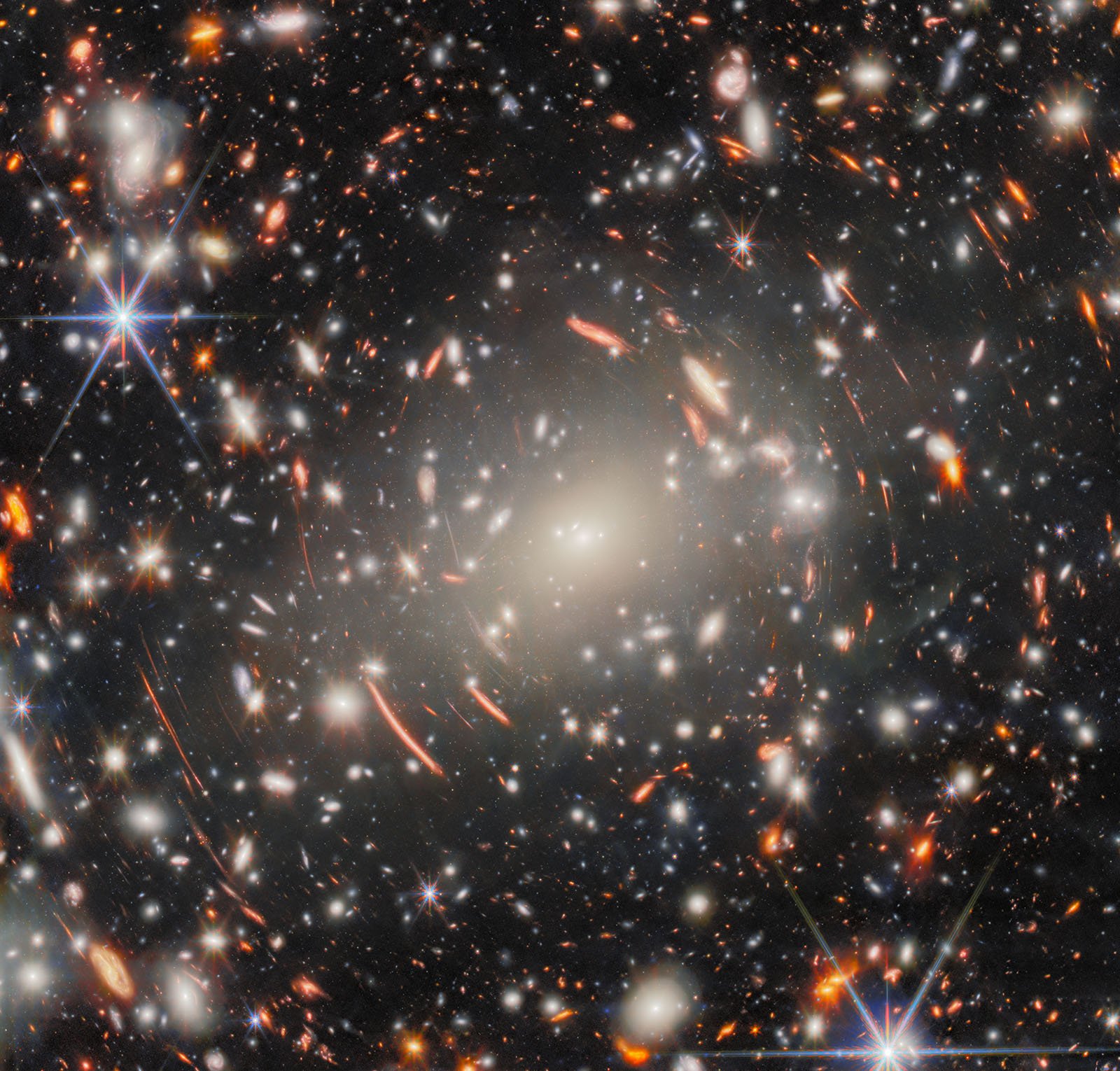Webb Captures a Cosmic Forest of Ancient Galaxies

The NASA/ESA/CSA James Webb Space Telescope (JWST)’s new “Picture of the Month” shows the mega-monster galaxy cluster Abell S1063. This impressive collection of galaxies is about 4.5 billion light-years from Earth in the constellation Grus (the Crane). However, surrounding Abell S1063 is the true star of the show — super-distant, ancient galaxies whose light is being warped by the gravitational force of the relatively closer Abell S1063.
Abell S1063 is a compelling target for astronomers because of its exciting gravitational lensing. Scientists using the Hubble Space Telescope observed Abell S1063 nearly a decade ago for the same reasons scientists are using Webb to look at — and past — it now.
Because Abell S1063 is so massive, the light from distant galaxies behind it is warped and bent, like a cosmic magnifying glass. Gravitational lensing is essential to enable astronomers to study the oldest known galaxies in the Universe, including the one just recently discovered, MoM-z14, that was formed just 280 million years following the Big Bang.
While Abell S1063 warps the light from distant galaxies, it also makes it much brighter and easier to see, and scientists can precisely detangle the distortions to learn more about the far-away galaxies that would otherwise be too faint to observe. The light arcing around Abell S1063 comes from a diverse range of galaxies, some very old and unusual.
As the European Space Agency (ESA) explains, Webb’s new Picture of the Month is a “deep field” image, meaning it is a very long exposure of a single portion of the sky. This image is comprised of nine different exposures captured across various near-infrared wavelengths using Webb’s NIRCam instrument, totaling around 120 hours of exposure. This image is Webb’s “deepest gaze on a single target” yet.
It’s not just Webb’s most distant look at a single target so far, it is one of its most spectacular images. Those warped, bent streaks of light have been traveling through the cosmos for billions of years, some of which have never been seen by humans before.
Image credits: ESA/Webb, NASA & CSA, H. Atek, M. Zamani (ESA/Webb)